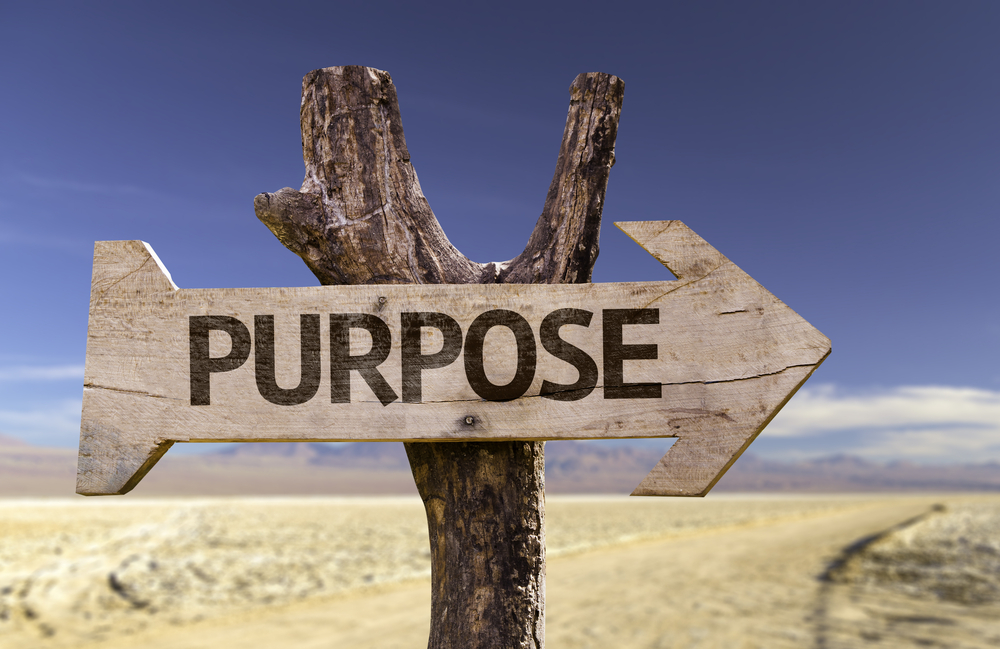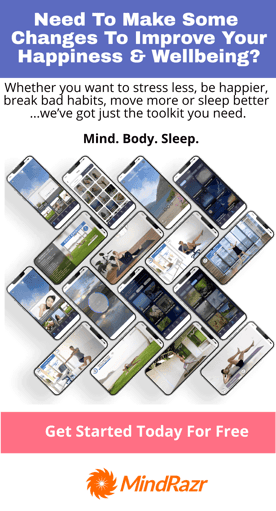Have you ever made a New Year’s Resolution? If so, you’re in good company. I wasn’t able to locate any reliable research to suggest the proportion of the population that does this, but from my own experience it does seem to be very high. My own experience also tells me that most of these resolutions focus on health and well-being – losing weight, going to the gym more, eating less take-away food and so on.
But do you know what is almost as common as making a New Year’s Resolution? Giving up on it after a few weeks or maybe a couple of months. I’m guessing that many of us can relate to NY resolutions, committed to with the best of intentions, that we have already failed to adhere to this year.
Why is that?
Decision Needs Vision
There’s no question that the sorts of decisions people make, around the time of New Year, to do something different with their health and well-being are good things to do. If you decide that you’re going to go to the gym more or that you’re going to eat a more plant-rich diet or reduce alcohol intake or sugary foods, you’ve definitely taken a step towards improving your health and wellness. And if you turn this decision into a set of actions then you’ve taken an even bigger step. Most people are bewildered and disheartened when they find themselves going backwards on decisions that they made to improve their health. They often use phrases like “self-sabotaging” and sometimes even reach a point where they feel like trying to make a change is pointless. This is not a nice place to be in relation to yourself, but it’s not the place you have to be.
The pattern looks very similar for most people. After making the decision, they leap into action with a determination to live a new best life. This continues for maybe three or four days in a row, maybe even a week. Sometimes even for two weeks. Somewhere in there, something happens to disrupt them –an urgent matter pops up or something happens to stop them from doing what they do at the time they planned to do it. They say to themselves “that’s okay – one day won’t matter. I’ll be back to it tomorrow.”
The next day they do go back to it, and then something else may happen and they get sidetracked for a day or maybe two days. Then they commit to going back to it but forget on that following day. Sooner or later two or three days pass without having engaged in the new behaviour and people realise that they missed it for two or three days. Then they say to themselves “That’s okay I’ll start it again next Monday.” (I don’t know why people always pick Mondays to start a new behaviour). If it’s Thursday when they say this to themselves, of course by the time Monday rolls around it’s out of their mind again. Before you know it, the decision to engage in healthy behaviour which carried so much promise with it has become another entry in the list of perceived failures to adopt a healthier lifestyle.
What’s missing for most people is a clear vision of where they’re headed with this new behaviour – not just the idea of doing something different, but engaging with the idea of “Where is this taking me?”
It’s a little like driving in the car. If you decide that you’re going to drive to Brisbane or Melbourne, for example, then you’ll fuel up the car, pack your bags and get on the road (after checking that the state borders haven’t closed 😊). Most likely you’ll stay on the road and you’ll keep driving towards your destination regardless of whether its day or night, sunny or raining, cold or warm, because you know where you want to get to. You know why you want to get there. And driving is just the activity that takes you to where you want to be.
If on the other hand, you just get in your car one day with no particular idea of where you wanted to go, I’m fairly confident that after a while driving around you’d lose interest or something else would get your attention and you’d probably be more focused on that. Or if the weather got too cold, or too wet, you’d probably decide that there were other things that you’d enjoy more. You’d return home, having driven around for a while, not particularly reached any destination and then you’d do something else. The difference, of course, is that in the first example, you had a clear vision of where you wanted to go and why you wanted to go there. In the second example, you just started doing something different with no particular plan in mind.
Vision Builds on Values
Values are about how we choose to act – both in relation to people around us and also with respect to ourselves. If I really value my health then my behaviours are going to reflect that. If I really value building financial wealth, then my behaviours will reflect that. If I really value the environment, then my behaviours will reflect that and so on. One of the really good measures of values is how we act when no one is watching. The behaviour you unselfconsciously display when others aren’t observing is a good indicator of what you really value.
So our short-term behaviour tends to reflect our underlying values. But when we accumulate short-term behaviour for a long enough period of time, it becomes long-term behaviour. And long-term behaviour determines where we end up. So we can either start behaving in a particular way and just see where we land or we can take the time to craft a vision of where we want to be, based on values, and begin acting in a way that’s consistent with those values.
If you want to sustain a long-term behavioural change that’s going to lead to a particular outcome for your own health, the most reliable way to achieve that is by identifying your own values, creating a vision that’s built on those values and then determining the behaviours that are consistent with those values and vision. It’s the same as the driving analogy above. The most reliable way to make sure you arrive in Brisbane is to plan to go to Brisbane – not just plan to go driving.
But What Are My Values? And Can I Change Them?
There are several ways that you can begin to identify what your values currently are. You could start by noticing how you behave when no one else is looking for example. This will give you a clue. You could take a free online values inventory such as the one found here or here. Or you could consult a list of values such as this one. Any of these will begin to help you defining and stating what your values currently are. But what should you do if you realise that there’s something you wish you valued but it’s not currently reflected in your behaviour?
If you feel like there are values that you wish you had more, one approach that might help you is to ask yourself this question: “How do I hope my family and friends will remember me when I’m no longer here?” You might think it sounds a little morose to reflect that way; however, it’s a great way of getting clear about what it is you really value.
Create a Vision
This is where the magic can happen if you’re willing to let it. The process of creating a vision takes some time in my experience. It requires some time to get your thoughts down on paper, then reflect for a while, go away, come back, review and write some more.
I always start with values. Take a clean sheet of paper and write a heading across the top - My Values Are: then write down the side of the page 3 to 6 values that really capture who you are. Make sure you space them out nicely so you’ve got room to add things in, in the next step.
The next stage of the process asks you to give some examples of how those values are either evident in your life now or how you would like them to be evident in your life. For example if one of your values is “Kindness to others”, write next to that examples that reflect either what you’re doing in relation to that value at the moment, or what you would like to be doing.
At this point, I’d be inclined to step away for a little while and let those ideas filter.
When you next come back to the document, start with another clean piece of paper and write a heading across the top – “In five years time”
Now try to get a mental image of how you see your life, particularly in relation to your health and well-being, five years from now. What are you doing? Who are you with? What do you love doing? What do you want to do more of? What do your friends and relatives say about you? What do you say about yourself?
These are all questions to help you develop that picture of who you are and what you’ll be doing five years from now – your vision.
Step away for a while and just sit with what you’ve written before you make too many more changes. A vision may end up looking something like:
“In 5 years, I’ll be engaging in physical activity every day. I’ll be playing my favourite team sport every week. I’ll be supporting my kids to develop their own healthy lifestyles. My friends and family will notice how much energy I have. I’ll be eating a plant predominant diet and drinking alcohol only one day per week.”
But there are no right or wrongs with a vision for your health and well-being – every vision is different and unique and what matters is that it’s your vision for you. Visions can change over time also. When you climb up a hill, the vision that you have before you start climbing is different from the vision that you have when you’re halfway up and different again from the vision that you have when you’re near the peak of the hill. The more you move towards your own current vision of health and well-being, the more likely you are to want to adjust it to reflect the steps you’ve taken and new opportunities you see.
Then What Do I Do?
Well, like they say in some shoe ads, just do it. You have the vision there. Keep it with you where you can see it, where you can read it, where you can think about it and where it can act as a prompt for you in your everyday behaviour. Remember the vision that you’ve made for yourself is based on your own values and what matters to you. Your vision was created by you and for you. No one can make it happen except you and no one can prevent you from reaching it.
When it comes to making a good start to the year, don’t focus on New Year’s Resolution made or broken. A resolution is just an intention, which is rather meaningless without clear direction and sustained action. Take the time to dig into your values, understand who you are just a little bit more and write a vision for your health and well-being that can guide you every day.
Simon Matthews
FASLM, MHlthSci, DipIBLM, MAPS
Writing exclusively for MindRazr, Simon is an AHPRA Registered Psychologist, Board Certified Lifestyle Medicine Professional, Fellow of the Australasian Society of Lifestyle Medicine and Fitness Trainer.
Share this
You May Also Like
These Related Stories

Finding Your “Why?” - The Value of Meaning and Purpose

Practical Reasons to Picture the Positive





